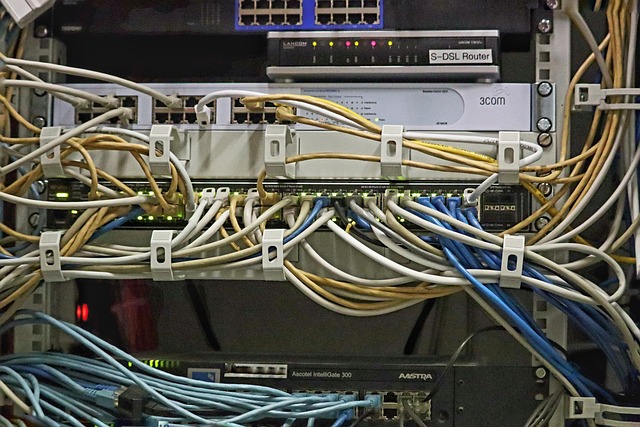# AI Innovations: Exploring Breakthrough Technologies Shaping the Future of Our Digital Landscape
Artificial Intelligence (AI) has emerged as a transformative force across various sectors, redefining the contours of our digital landscape. The rapid advancements in AI technologies are not merely enhancing existing systems but are also paving the way for entirely new paradigms of interaction, efficiency, and creativity. This article delves into some of the most significant AI innovations that are shaping the future, focusing on machine learning, natural language processing, and computer vision.
## Machine Learning: The Backbone of Intelligent Systems
Machine learning (ML) has become synonymous with AI, serving as its foundational pillar. By enabling systems to learn from data and improve over time, ML algorithms are revolutionizing industries ranging from healthcare to finance. One of the most compelling applications of machine learning is in predictive analytics. Businesses harness vast amounts of data to forecast trends, optimize operations, and enhance customer experiences. For instance, in retail, ML algorithms analyze purchasing patterns to offer personalized recommendations, ultimately driving sales and customer satisfaction.
Moreover, the advent of deep learning, a subset of machine learning, has introduced neural networks capable of processing complex data types, including images and audio. This capability has led to significant breakthroughs, particularly in fields such as autonomous driving and medical diagnostics. In autonomous vehicles, deep learning algorithms analyze real-time data from sensors and cameras to make split-second decisions, enhancing safety and efficiency. Similarly, in healthcare, ML models assist in early disease detection by analyzing medical images with precision that often surpasses human capabilities.
The integration of machine learning with other technologies, such as the Internet of Things (IoT), further amplifies its impact. Smart devices equipped with ML algorithms can collect and analyze data in real-time, leading to more informed decision-making. As these systems become more interconnected, the potential for optimizing resource use and improving quality of life becomes increasingly tangible.
## Natural Language Processing: Bridging Human and Machine Communication
Natural language processing (NLP) represents another frontier in AI innovation, enabling machines to understand and interact with human language. This technology has evolved significantly, allowing for more nuanced and context-aware interactions. Chatbots and virtual assistants, powered by NLP, are now commonplace in customer service, providing immediate responses and support. The ability of these systems to understand context, sentiment, and intent marks a significant leap forward in human-computer interaction.
Beyond customer service, NLP is being utilized in content generation and sentiment analysis. Automated writing tools now assist marketers and content creators by generating articles, product descriptions, and social media posts. These tools leverage advanced algorithms to produce coherent and contextually relevant text, thereby saving time and resources. Furthermore, sentiment analysis tools analyze social media conversations to gauge public opinion, providing businesses with valuable insights into consumer behavior and preferences.
The implications of NLP extend to education and accessibility as well. Language translation services powered by NLP have made global communication more feasible, breaking down language barriers that once hindered international collaboration. Additionally, speech recognition technologies are aiding individuals with disabilities, providing them with tools to interact with technology more seamlessly. As NLP continues to evolve, its potential to enhance communication and understanding between humans and machines will only grow.
## Computer Vision: Enabling Machines to See and Understand
Computer vision is another groundbreaking area of AI innovation that allows machines to interpret and understand visual information. By mimicking human sight, computer vision technologies are transforming industries such as security, healthcare, and manufacturing. The ability to analyze images and videos in real-time has led to significant advancements in surveillance and security systems. Facial recognition technology, for example, is now widely used for identity verification and access control, enhancing security measures in various settings.
In healthcare, computer vision is proving invaluable in diagnostics. Algorithms can analyze medical images, such as X-rays and MRIs, to detect anomalies with remarkable accuracy. This capability not only aids in early diagnosis but also allows healthcare professionals to focus on patient care rather than spending excessive time on image analysis. The integration of computer vision with telemedicine is further streamlining healthcare delivery, enabling remote consultations and diagnostics.
Manufacturing processes are also being transformed by computer vision technologies. Quality control systems equipped with computer vision can identify defects in products at a speed and accuracy that far exceed human capabilities. This precision not only reduces waste but also ensures that products meet stringent quality standards before reaching consumers. As industries continue to adopt computer vision technologies, the potential for increased efficiency and reduced operational costs will be significant.
## Conclusion: A Future Driven by AI Innovations
The advancements in AI technologies, particularly in machine learning, natural language processing, and computer vision, are reshaping our digital landscape in profound ways. Each of these innovations contributes to a future where machines not only assist but also enhance human capabilities. As these technologies continue to evolve, they promise to unlock new opportunities, drive economic growth, and improve quality of life across the globe.
Embracing these innovations will require a thoughtful approach to ethics and governance, ensuring that AI is used responsibly and equitably. As we stand on the brink of an AI-driven future, the potential for transformative change is immense. By understanding and leveraging these breakthrough technologies, we can navigate the complexities of tomorrow’s digital landscape with confidence and creativity. The journey has just begun, and the possibilities are limitless.











